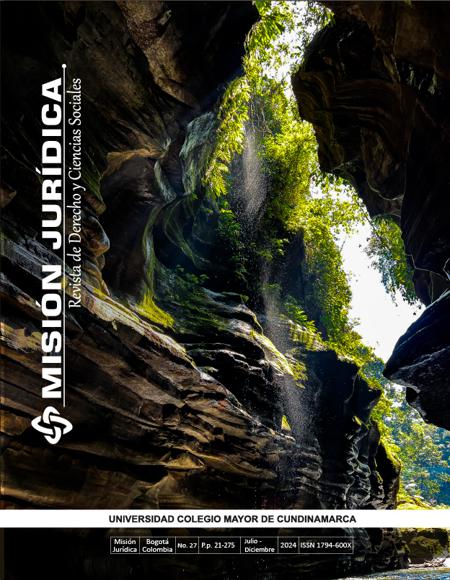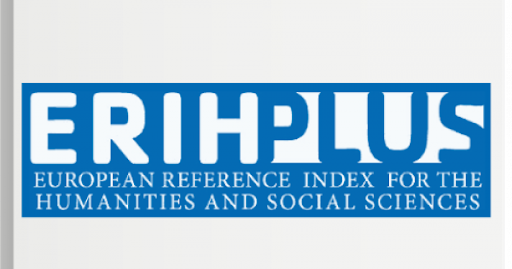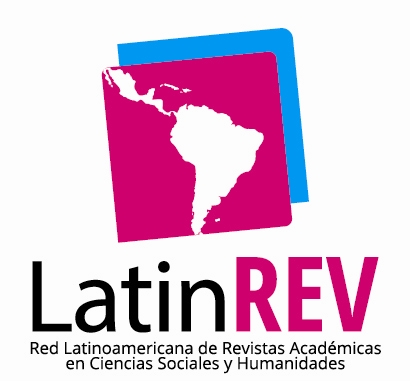El principio in dubio pro natura a la luz de la evidencia científica: la responsabilidad del Estado
The in dubio pro natura principle in the light of scientific evidence:state responsibility

Esta obra está bajo una licencia internacional Creative Commons Atribución-NoComercial-SinDerivadas 4.0.
DERECHOS RESERVADOS DE AUTOR
Todo documento incluido en la revista puede ser reproducido total o parcialmente, siempre y cuando se respete su contenido original, se cite la fuente y se use con fines académicos no comerciales. Misión Jurídica y su contenido se encuentra protegido bajo una Licencia Creative Commons Atribución-NoComercial-SinDerivar 4.0 Internacional.

Misión Jurídica por Misión Jurídica se distribuye bajo una Licencia Creative Commons Atribución-NoComercial-SinDerivar 4.0 Internacional.
Basada en una obra en http://unicolmayor.edu.co/publicaciones/index.php/mjuridica/index.
Permisos que vayan más allá de lo cubierto por esta licencia pueden encontrarse en http://unicolmayor.edu.co/publicaciones/index.php/mjuridica/index.
Mostrar biografía de los autores
El principio In Dubio Pro Natura ha evolucionado como un principio separado del principio de precaución de acuerdo con el derecho ambiental. El objetivo de este artículo es analizar tanto el principio In Dubio Pro Natura como el principio de precaución bajo la luz de la evidencia científica y la responsabilidad estatal. El principio de precaución es aplicable como regla general en casos en que hay riesgos potenciales de un daño grave al ambiente independientemente de la existencia de certeza científica respecto a tales riesgos. Por otra parte, el principio In Dubio Pro Natura resulta más garantista para el medio ambiente y sus intereses que la obligación de actuar con precaución ya que este es el fundamento para preferir la interpretación de las normas que ofrezca el mayor grado de protección al ambiente. El autor de este artículo sostiene que en escenarios en los que las autoridades estatales tienen un mayor grado de responsabilidad respecto al manejo de una situación y puedan controlar los efectos negativos de una amenaza al ambiente, la salud pública o la sostenibilidad, por ejemplo, en el caso de proyectos extractivistas, el uso del principio In Dubio Pro Natura debe preferirse. Por el contrario, este artículo examina la lucha contra el cambio climático y el establecimiento de metas globales, por una parte, así como los riesgos potenciales que las nuevas tecnologías pueden tener sobre la biodiversidad, como dos ejemplos en los que el principio In Dubio Pro Natura no puede ser aplicado. En el primer caso, existe consenso científico sobre la urgencia de combatir el cambio climático. Sin embargo, pese a los compromisos globales, la responsabilidad estatal individual y el control sobre la línea de acción es débil. En el segundo escenario, el autor hace referencia a la regulación del uso de nuevas tecnologías sobre la cual existe un mayor control de las autoridades nacionales en casos en que no existe suficiente certeza respecto a los riesgos ambientales o a la salud pública que estas plantean. En estos casos se debe preferir el principio de precaución.
Visitas del artículo 24 | Visitas PDF 24
Descargas
- AVEN, T. (2013), The concepts of risk and probability: An editorial”, Health, Risk & Society vol. 15 no. 2, 117–122.
- BALDIN, S. et. al (2022), The In Dubio Pro Natura Principle: an attempt of a comprehensive legal reconstruction, Revista General de Derecho Público Comparado 32/2022, pp. 168-199.
- BALMORI, A. (2021), Electromagnetic radiation as an emerging driver factor for the decline of insects, Sci Total Environ 2021;767: 144913, <https://doi.org/10.1016/j.scitotenv.2020.144913>
- BROWN, P. (2020), Studying COVID-19 in light of critical approaches to risk and uncertainty: research pathways, conceptual tools, and some magic from Mary Douglas, Health, Risk & Society vol. 22, 1-14.
- BRYNER, N. (2015), Aplicación del principio In Dubio Pro Natura para el cumplimiento de la legislación ambiental, Congreso Interamericano de Derecho Ambiental, Washington, Organization of American States' General Secretary
- BURGESS, A. (2004), Cellular phones, public fears, and culture of precaution. Cambridge: Cambridge University Press.
- Communication from the European Commission on the precautionary principle (COM(2000) 1 final, 02 February, 2000.
- COUNCIL OF THE EUROPEAN UNION (2020), Council conclusions on shaping Europe’s digital future. Brussels; <https://www.consilium.europa.eu/media/44389/st08711-en20.pdf>.
- COINTE, B. et al (2023), A history of the 1.5°C target. WIREs Climate Change, 14(3), e824. <https://doi.org/10.1002/wcc.824>
- DOUGLAS, M. (2001), “Dealing with uncertainty”, Ethical perspectives (vol. 8 no. 3), 145-155
- EUROPEAN ENVIRONMENT AGENCY (2013), Late lessons from early warnings II: science, precaution and innovation report 1/2013.
- GANDHI, OP. (2019), Microwave emissions from cell phones exceed safety limits in Europe and the US when touching the body, IEEE Access 2019.
- Human Rights Committee, no. 2728/2016, October 24, 2019.
- Inter-American Commission of Human Rights (2019), Businesses and Human Rights: Inter-American Standards” report, adopted by the Inter-American Commission of Human Rights, November 01, 2019.
- IEGMP, (2000), Mobile Phones and Health. Chilton, UK: Independent Expert Group on Mobile Phones, National Radiological Protection Board
- JANSEN, T. et al. (2017), Breaking Down Uncertain Risks for Risk Communication: A Conceptual Review of the Environmental Health Literature, Risk, Hazards & Crisis in Public Policy vol. 9, Wiley Periodicals, 4-38
- LAW, A. and MCNEISH, W. (2007), Contesting the new irrational actor model: a case study of mobile phone mast protest. Sociology, 41 (3), 439-456.
- LEVITT, BB, LAI, HC, MANVILLE, AM. (2021), Effects of non-ionizing electromagnetic fields on flora and fauna, part 1. Rising ambient EMF levels in the environment, Rev Environ Health 2021;37:81–122. <https://doi.org/10.1515/reveh-2021-0050>.
- KORTHALS, M. (2011), “Ethics of environmental health”, The SAGE handbook of health care ethics: Core and emerging issues, 2011, 413-426
- MORAGA, P. (2015), Análisis de la aplicación principio precautorio en el marco jurídico chileno, Moraga, Pilar et al., El principio precautorio en el derecho comparado, Santiago de Chile, LOM, 2015.
- NYBERG, N., MCCREDDEN, J., WELLER, S. & HARDELL, L. (2022), The European Union prioritises economics over health in the rollout of radiofrequency technologies, Reviews on Environmental Health, <https://doi.org/10.1515/reveh-2022-0106>
- OECD (2023), Understanding and Applying the Precautionary Principle in the Energy Transition, OECD Publishing, Paris, <https://doi.org/10.1787/5b14362c-en>
- ORESKES, N. (2005), “Beyond the Ivory Tower: The Scientific Consensus on Climate Change”, in Science (New York, N.Y, vol. 306), 1686.
- Paris Agreement to the United Nations Framework Convention on Climate Change, December 12, 2015.
- ROBINSON, N. (2014), Fundamental Principles of Law for the Anthropocene? in Environmental. Policy & Law, 44, 2014.
- Rio Declaration on Environment and Development, 14 June 1992.
- RUGGIE, J. (2008), Protect, Respect & Remedy: A Framework for Business and Human Rights”, Innovations: Technology, Governance, Globalization vol. 3, issue 2, 189-212.
- Tătar vs. Romania, European Court of Human Rights, no. 67021/01, January 27, 2009.
- United Nations Framework Convention on Climate Change, 09 May 1992.
- VAN BEEK, L., ET AL (2022). Navigating the political: An analysis of political calibration of integrated assessment modelling in light of the 1.5C goal. Environmental Science and Policy, 133, 193–202 <https://doi.org/10.1016/j.envsci. 2022.03.024>.
- WATSON, RT et al. (2001), Global Climate Change- the latest assessment: Does global warming warrant a health warning? in Global Change and Human Health, Volume 2, No. 1, 2001
- WIEDEMANN, P. and SCHÜTZ, H. (2005), The Precautionary Principle and Risk Perception: Experimental Studies in the EMF Area, Environmental Health Perspectives 113:4 CID, <https://doi.org/10.1289/ehp.7538>
- WORLD HEALTH ORGANIZATION (2020), WHO Director-General's opening remarks at the media briefing on COVID-19 - 13 April 2020, World Health Organization, 13 April, 2020 <https://www.who.int/director-general/speeches/detail/who-director-general-s-opening-remarks-at-the-media-briefing-on-covid-19--13-april-2020 >, accessed 30 August, 2023.
















